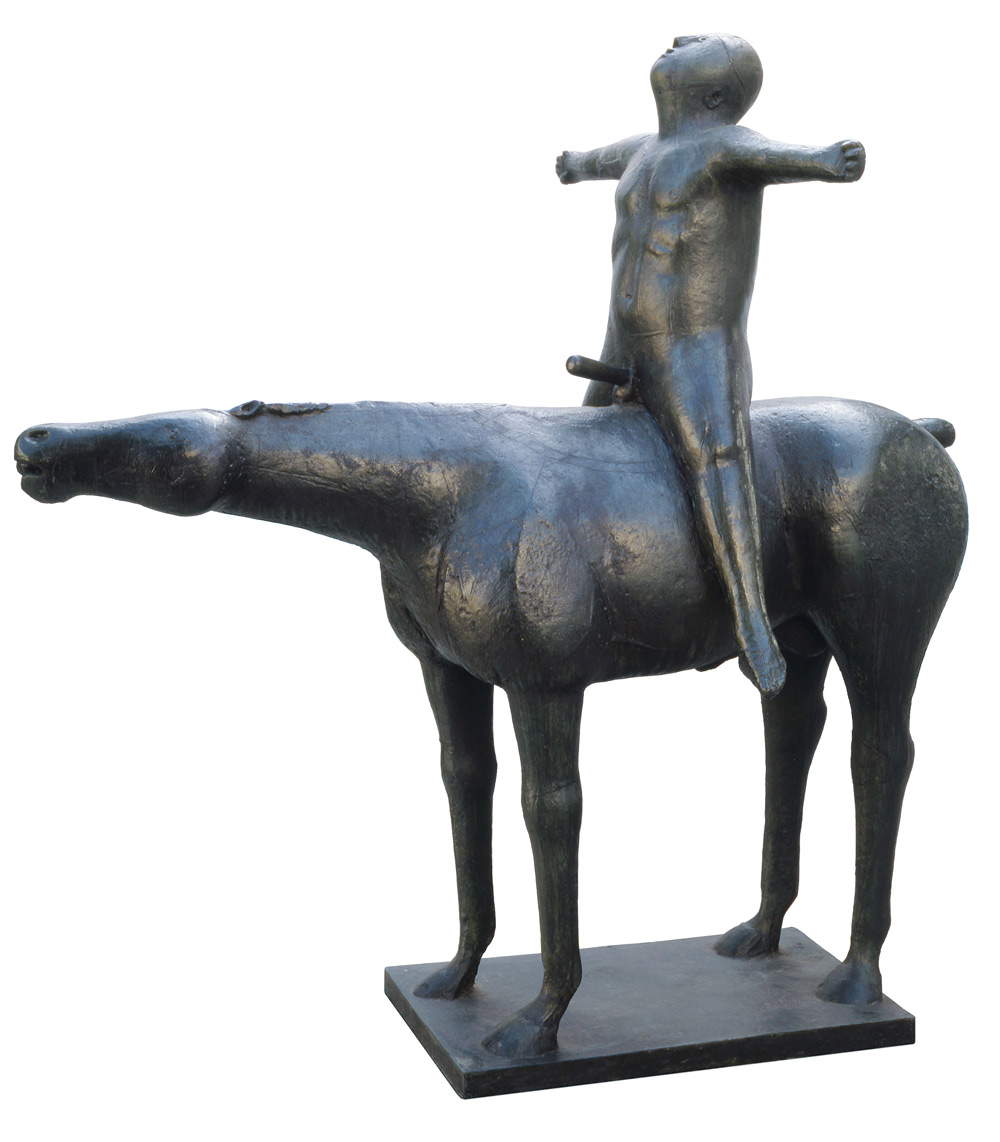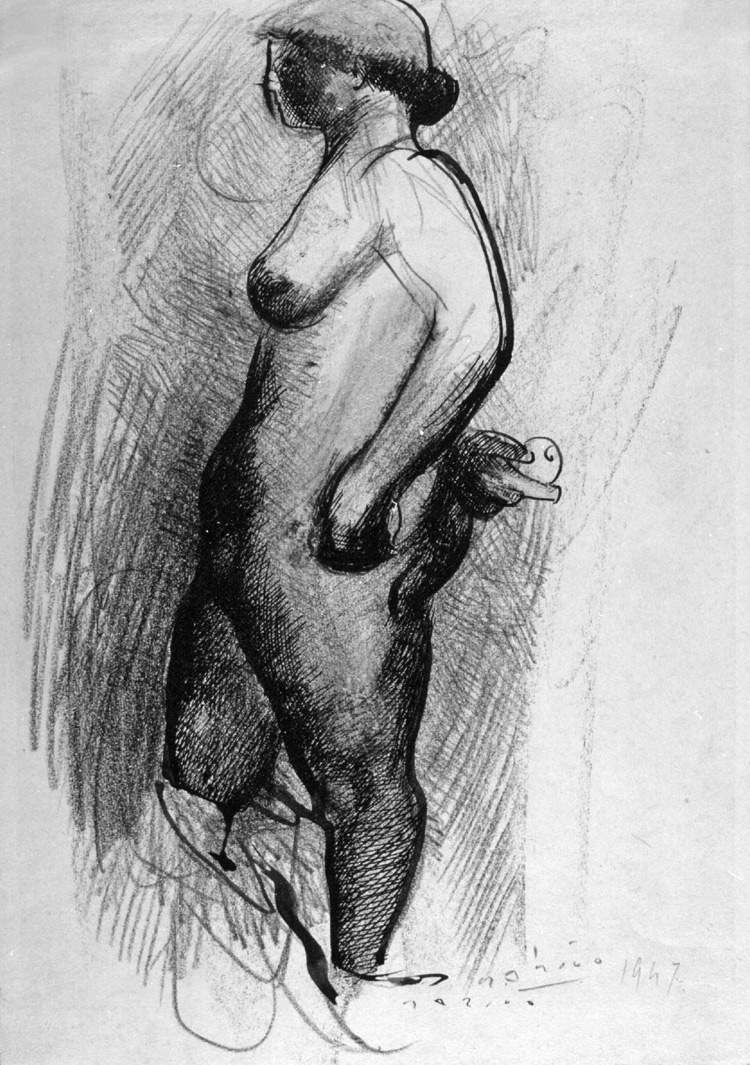Coming to Venice, to the Peggy Guggenheim Collection, is the exhibition Marino Marini. Visual Passions, the first retrospective on the great artist Marino Marini (Pistoia, 1901 - Viareggio, 1980), which makes a stop in the Veneto after having been in the artist’s hometown of Pistoia at the Palazzo Fabroni venue: the aim is to ensure an organic collocation of the artist in the history of sculpture through an unprecedented reading of some seventy works. Fifty of these are works by Marino Marini, while the remaining twenty are works by which the artist was inspired or with which he was confronted: these are works ranging from antiquity to the twentieth century (thus crossing through the art of the Egyptians, Greek-Archean and Etruscan art, medieval and Renaissance sculpture, the Renaissance and the nineteenth century), which are fundamental for understanding the developments of the Pistoia artist’s sculpture. The exhibition, curated by Barbara Cinelli and Flavio Fergonzi, in collaboration with Chiara Fabi, is housed in the temporary exhibition section, the Project Rooms and the veranda. It opened on January 27, 2018 and will run until May 1, 2018.
“Such a dialogue,” the presentation reads, “offers a new, unexpected and critically innovative point of view around the themes addressed by the sculptor, transcending the cages of chronology, styles and periodizations. In an itinerary of Marino Marini’s production extended from the 1920s to the 1950s, each room stages a few episodes of this dialogue.” And again: “The visitor can here concretely measure, through the comparisons proposed room by room, Marini’s debt not only to Etruscan sculpture but also to Greek and ancient-oriental sculpture; he can appreciate his dialogue with fundamental works by Arturo Martini and Giacomo Manzù (for the theme of the male nude) and Ernesto De Fiori and Aristide Maillol (for the female nude); he can discover an unexpected attention of the Pistoiese sculptor to Florentine sculpture of the 15th century and, at the same time, to Auguste Rodin, which coincides with his more expressionist phase of the 1940s; he can assess how, through his frequentation of Henry Moore and his knowledge of the works of Pablo Picasso, he came to reconsider some models of great medieval Italian sculpture, Giovanni Pisano in particular.”
So we start with early works: heads and busts placed side by side with canopic and Etruscan heads (Etruscan art was fundamental to the reduction of the human body to geometric forms, a constant feature of Marino Marini’s art), a Greek-Archean head from Selinunte, and a Renaissance bust by Verrocchio, which proved important in combining abstract synthesis of volume and attention to detail. Important at this stage is the so-called Popolo, a work from 1929 (the artist was then 28 years old) that marked the turning point in Marino Marini’s sculpture towards archaism. The work is compared with the figured lid of an Etruscan urn from the Archaeological Museum in Florence, which very effectively highlights the debts to Etruscan art, in keeping with the climate of rediscovery of Etruscan artistic productions that characterized Italian art in the 1920s.
The theme of the male nude, on the other hand, sees comparisons with contemporary works by Arturo Martini (present with a 1933 Tobiolo ) and Giacomo Manzù (a 1938 David ): by Marino Marini, on the other hand, there is a 1932 Swimmer and a 1935 Boxer. Two sporting subjects that highlight how the artist favored, rather than physical performance, a focus on concentration and the suffering resulting from defeat. Continuing on, visitors will find the important Icarus of 1933, an artist’s challenge to the principle that wants sculpture to rest on a plinth(Icarus is instead a body plunging into the void, inspired by the achievements of expressionist artists). A comparison with Ernesto De Fiori and Aristide Maillol is devoted to female nudes to investigate how the artist managed to transform the female body into abstract forms (an “absolute and virginal form,” as the Pistoiese sculptor defined it, who saw the female body as “a bridge to reach poetry”). To make the creative process more evident, the exhibition also displays some drawings: drawing was in fact a widely practiced medium for Marino Marini.
Again, the public will be able to appreciate the confrontation with Auguste Rodin, whom the artist approached in the years of World War II, following which Marino Marini would modulate his language into even more abstract forms, devoting himself in particular, after a period spent making numerous portraits (particularly close to Renaissance portraiture), to the theme of the “horse and rider”: there are three rooms in the exhibition dedicated to this theme, with some of Marino Marini’s most important works. First we will encounter the Cavallini: small sculptures in polychrome terracotta and ceramics made beginning in 1942 during his stay in Canton Ticino, and through which the artist investigated all the possible poses and attitudes of the horse, along with combinations with the rider, in order to achieve greater confidence in the design and combination of forms. The exploration of the theme continues with the three rooms of the section called, precisely, Horses and Riders, culminating with the Picasso synthesis of the 1952 Horseman.
Of particular interest is then the 1948Angel of the City, a work-symbol of the Peggy Guggenheim Collection: the U.S. collector wanted to place it in front of her Venetian home (where it still stands today), in the overlook of the Grand Canal. The exhibition continues with a display of portraits, which look mainly to the purity of Egyptian art but are not lacking in psychological acuity, and with research from the 1950s. We start with the Jugglers of 1953-1956, with their essential compositional schemes that still recall Picasso, but also refer to Etruscan art and the contemporary production of Henry Moore, and arrive at the finale of the exhibition with the Miracles (these are “upside-down” horsemen with the falling horse) and the Warriors of the 1950s and 1960s, which see an unexpected and new confrontation with the ancient art of Giovanni Pisano. Moreover, the “visual passion” for Giovanni Pisano’s art was shared with Henry Moore, another artist who was strongly fascinated by the lessons of the great medieval artist.
The exhibition is accessed with the admission ticket to the Peggy Guggenheim Collection. Prices: full 15 euros, over 65 13 euros, students under 26 9 euros, children 0-10 years and members free admission. With the ticket, in addition to the permanent collection and exhibition, you can also visit the Hannelore B. and Rudolph B. Collection. Schulhof and the Nasher Sculpture Garden. Opening hours: daily except Tuesdays (closing day) 10 a.m. to 6 p.m. Free guided tours daily at 3:30 p.m., upon purchase of museum admission ticket (reservations not required). Marino Marini. Visual Passions is organized in collaboration with the Marino Marini Foundation, has a scientific committee composed of curators and scholars of the caliber of Philip Rylands, Salvatore Settis, Carlo Sisi and Maria Teresa Tosi, and is realized with the support of Lavazza as Global Partner of the Solomon R. Guggenheim Foundation. The Peggy Guggenheim Collection exhibition program is supported by Institutional Patrons EFG, Lavazza and Regione del Veneto, Guggenheim Intrapresæ and the museum’s Advisory Board. Educational projects related to the exhibition are carried out thanks to the Araldi Guinetti Foundation, Vaduz The catalog is published by Silvana Editoriale and contains essays by Flavio Fergonzi, Barbara Cinelli, Chiara Fabi, Gianmarco Russo, and Francesco Guzzetti, with extensive iconographic apparatus. For info, you can visit www.guggenheim-venice.it.
Below is a selection of works that you can find in the exhibition.
 |
| Marino Marini, The Angel of the City (1948; bronze, 175 x 176 x 106 cm; Peggy Guggenheim Collection, Venice; © Marino Marini, by SIAE 2018) |
 |
| Marino Marini, Pomona (1945; bronze, 162 x 66 x 53 cm; Pistoia, Marino Marini Foundation; © Marino Marini, by SIAE 2018) |
 |
| Marino Marini, Pomona (1947; ink and lais on paper, 32 x 22.7 cm; Marino Marini Foundation, Pistoia; © Marino Marini, by SIAE 2018) |
 |
| Marino Marini, Reiter (Knight) (1947; bronze, 100, 05 x 67 x 49 cm; Munich, Bayerische Staatsgemäldesammlungen, Pinakothek der Moderne; © Marino Marini, by SIAE 2018) |
 |
| Marino Marini, People (1929; terracotta, 66 x 109 x 47 cm; Museo del Novecento-Coll. Marino Marini, Milan Copyright City of Milan all legal rights reserved; Photo Luca Postini; © Marino Marini, by SIAE 2018) |
 |
| Marino Marini, Portrait of Germaine Richier (1945; bronze, 58 x 43 x 30.5 cm; Marino Marini Foundation, Pistoia; © Marino Marini, by SIAE 2018) |
 |
| Marino Marini, Saint James on Horseback (1939; plaster, Size of horse: 167 x 141 x 44 cm; Size of rider: 118 x 62 x 51 cm; Private collection, Milan; © Marino Marini, by SIAE 2018) |
 |
| Peggy Guggenheim with Marino Marini’sAngel of the City. |
 |
| Major Marino Marini exhibition in Venice, is the first retrospective on the Tuscan artist |
Warning: the translation into English of the original Italian article was created using automatic tools. We undertake to review all articles, but we do not guarantee the total absence of inaccuracies in the translation due to the program. You can find the original by clicking on the ITA button. If you find any mistake,please contact us.